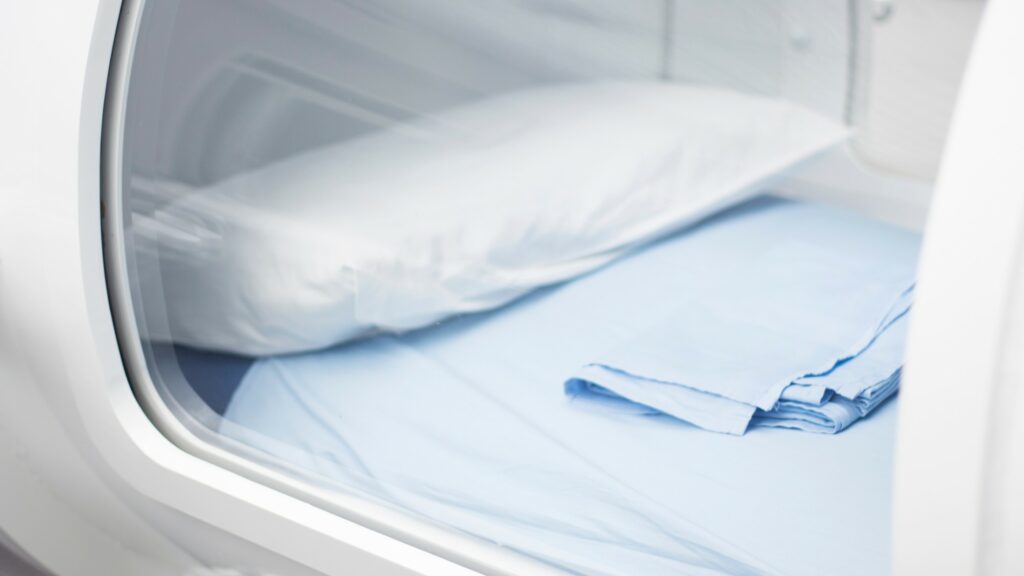In the realm of advanced healthcare, hyperbaric oxygen chambers (HBOT) emerge as powerful tools for delivering 100% oxygen under greater-than-atmospheric pressure, unlocking potential therapeutic benefits for various conditions. Selecting the right HBOT empowers your facility to tap into this innovative treatment modality, potentially enhancing patient outcomes and expanding your clinical capabilities. This comprehensive buying guide, meticulously crafted for B2B medical device buyers around the world, navigates the intricacies of HBOT, guiding you towards an informed choice that aligns with your specific needs.
Essential Hyperbaric Oxygen Chamber Features
- Chamber Type and Capacity: Explore monoplace chambers designed for individual patients or multiplace chambers accommodating several patients simultaneously. Consider patient volume, clinical applications, and space limitations.
- Pressurization Levels: Ensure the chamber can achieve prescribed pressures, typically in atmospheres absolute (ATA), addressing specific clinical protocols.
- Safety Features and Monitoring: Prioritize chambers equipped with comprehensive safety systems like pressure relief valves, fire suppression, and real-time monitoring for patient oxygen levels, vital signs, and communication.
- Patient Comfort and Accessibility: Consider features like comfortable internal seating or stretcher compatibility, ease of entry and exit, and communication systems.
- User Interface and Controls: Opt for user-friendly interfaces with intuitive controls and monitoring dashboards for streamlined operation and efficient clinical workflow.
Understanding Hyperbaric Oxygen Therapy (HBOT) Basics
HBOT involves administering 100% pure oxygen to a patient enclosed within a pressurized chamber, usually above 1.4 atmospheres absolute (ATA). Increased oxygen levels dissolve into the bloodstream and tissues, promoting healing by stimulating angiogenesis (new blood vessel growth), reducing inflammation, and enhancing the body’s ability to fight infection.
Key Chamber Types and Selection Criteria
- Monoplace Chambers: Designed for a single patient, offering individual treatment control and often a more comfortable experience. Ideal for facilities with focused use cases and potentially limited space.
- Multiplace Chambers: Accommodate multiple patients simultaneously, providing greater treatment capacity and potential cost-effectiveness, particularly for larger facilities with diverse patient needs.
- Portable Chambers: Offer flexibility and potential for off-site treatments, but careful consideration of pressure capabilities, safety regulations, and logistical requirements is crucial.
- Chamber Size and Pressure Capacity: Ensure the chamber aligns with your intended clinical applications. Consider the need for accommodating patient comfort features or additional equipment within the chamber.
- Safety Features and Alarms: Prioritize comprehensive safety systems, including pressure monitoring, oxygen sensors, fire suppression, and emergency ventilation.
Essential HBOT Considerations for B2B Buyers
- Clinical Applications: Evaluate the FDA-approved and off-label uses of HBOT relevant to your facility’s specialization (e.g., wound care, carbon monoxide poisoning, decompression sickness, radiation injury).
- Patient Volume and Workflow: Consider the number of patients you anticipate treating daily and assess chamber capacity and operational efficiency accordingly.
- Space and Infrastructure Requirements: Plan for adequate dedicated space, electrical, and oxygen supply needs specific to the chosen HBOT system.
- Staff Training and Expertise: Ensure availability of qualified medical professionals trained in HBOT operation, patient monitoring, and safety protocols.
Additional Considerations
- Facility Infrastructure: Assess your current infrastructure and the potential modifications required to accommodate a hyperbaric oxygen chamber, including space, electrical requirements, and ventilation systems.
- Clinical Protocols and Staffing: Establish clear treatment protocols and ensure qualified staff trained in HBOT operation and patient management.
- Regulatory Compliance: Ensure the HBOT adheres to relevant international medical device regulations for patient safety and quality standards.
- Cost-Effectiveness: Evaluate the initial purchase price, ongoing maintenance, staffing costs, and potential clinical revenue streams from HBOT therapy.
Understanding Hyperbaric Oxygen Therapy Applications
While additional research is ongoing, HBOT shows promise for various medical conditions, including:
- Wound Healing: Promotes oxygenation to accelerate healing in chronic wounds, diabetic ulcers, and post-surgical complications.
- Decompression Sickness: Essential for treating divers with decompression illness resulting from rapid changes in pressure.
- Carbon Monoxide Poisoning: Facilitates oxygen delivery to counter the effects of carbon monoxide poisoning.
- Radiation Injury: May help mitigate tissue damage from radiation therapy used in cancer treatment.
Leading Hyperbaric Oxygen Chamber Manufacturers
Airox Technologies Limited
Airox Technologies Limited, a frontrunner in the PSA oxygen generator industry, presents the Barox Omega Hyperbaric Oxygen Chambers, setting the benchmark for hyperbaric oxygen therapy. With an impressive 50-55% market share in private hospital PSA medical oxygen and 950+ generators operational by March 31, 2022, Airox stands as a leader in the Indian medical oxygen generation market, attaining a 30-31% market share.
The Barox Omega chambers, designed and manufactured by Airox Technologies Limited in India, are tailored for healthcare facilities and clinics in South Africa, Nigeria, and Kenya. Known for affordability, quality, and reliability, these chambers boast a design pressure range of 2-16 Bar, ensuring safety and efficacy during hyperbaric oxygen therapy. The main chamber accommodates 4 to 32 persons, while the antre chamber caters to 1 to 8 persons, providing flexibility based on healthcare facility needs and patient volume.
In conclusion, hyperbaric oxygen chambers (HBOT) represent a significant advancement in medical technology, offering a myriad of therapeutic benefits for diverse medical conditions. Selecting the right HBOT system is crucial for optimizing patient outcomes and enhancing the capabilities of your healthcare facility. This guide, tailored for B2B medical device buyers, delves into the essential features, safety considerations, and practical insights necessary to make an informed decision. By understanding the nuances of HBOT, from chamber types to regulatory compliance, you can ensure that your investment aligns with your clinical needs and operational goals, ultimately contributing to improved patient care and innovative treatment solutions.
Disclaimer: This buying guide provides general information and should not replace professional advice and guidance
